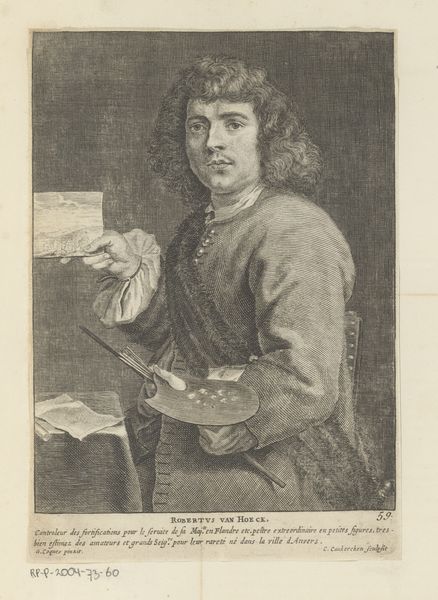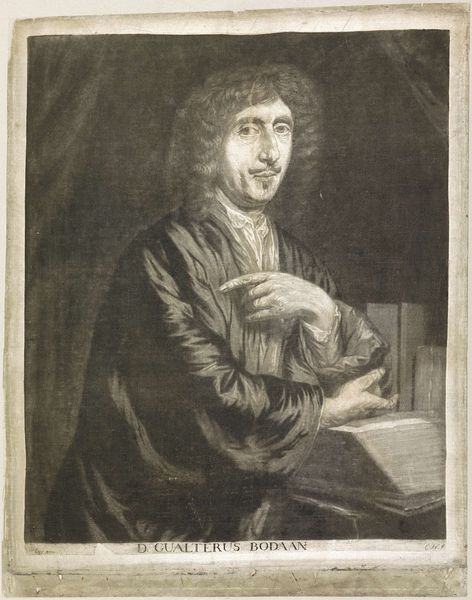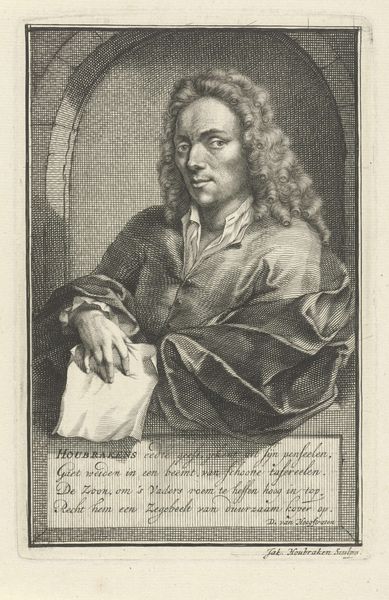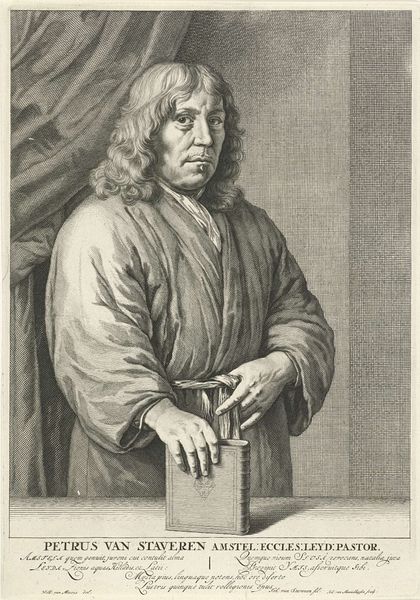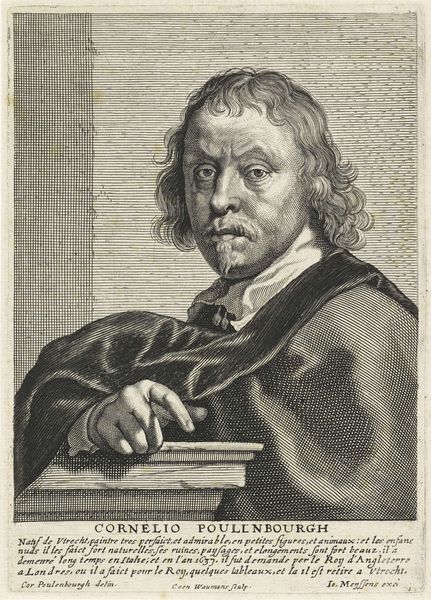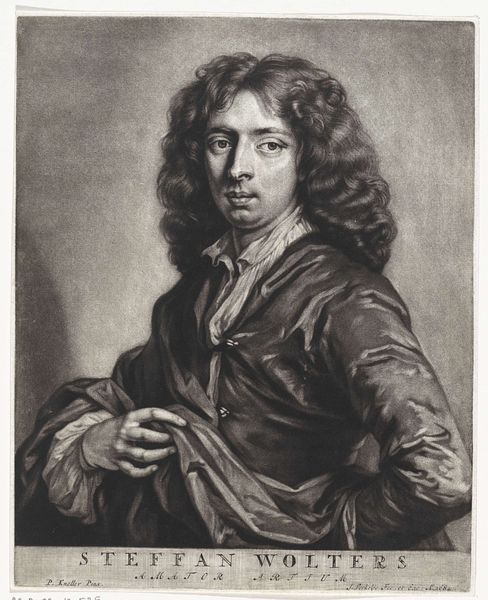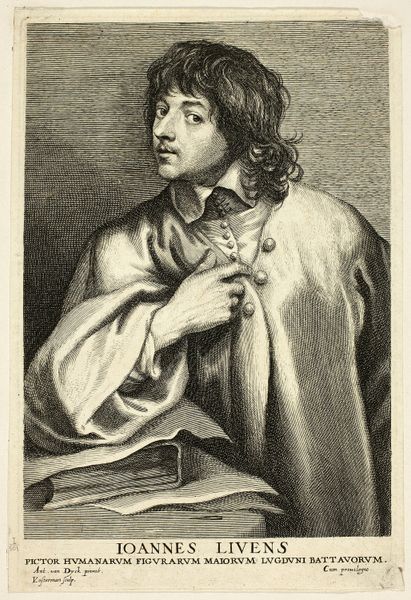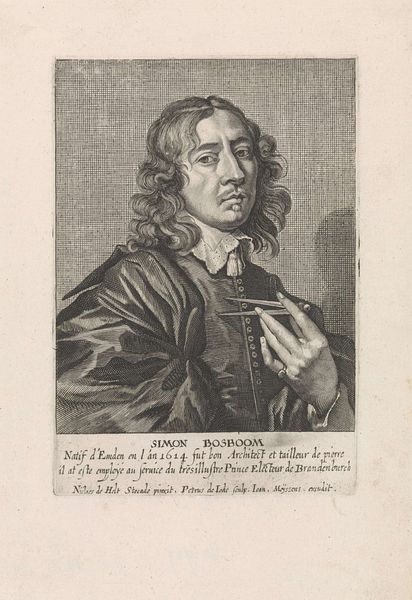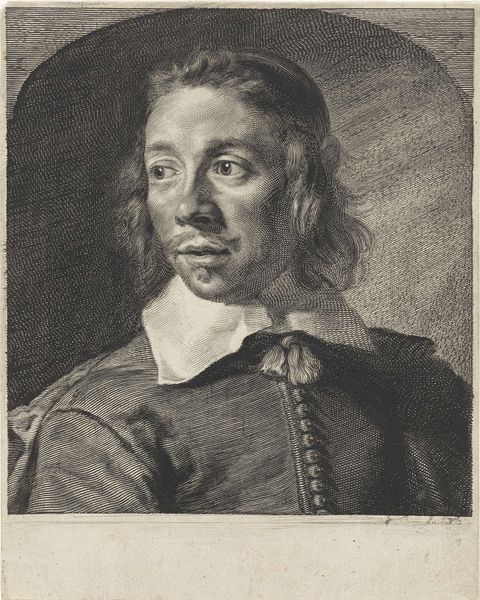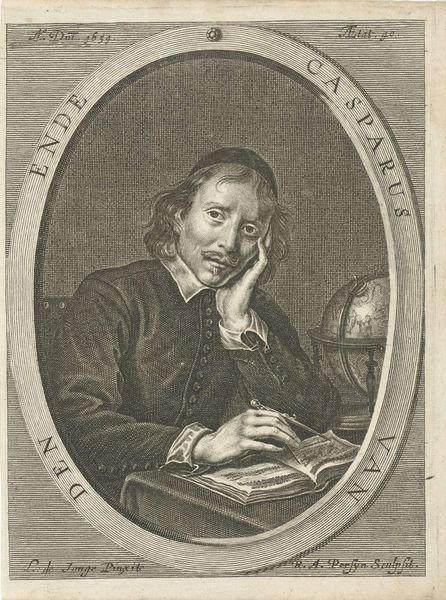
Portret van de schilder Robert van den Hoecke c. 1640 - 1680
0:00
0:00
print, intaglio, engraving
#
portrait
#
self-portrait
#
baroque
#
dutch-golden-age
# print
#
intaglio
#
old engraving style
#
portrait reference
#
portrait drawing
#
history-painting
#
engraving
Dimensions: height 185 mm, width 130 mm
Copyright: Rijks Museum: Open Domain
Curator: Let's take a look at this engraving from the Dutch Golden Age. This is a print titled "Portret van de schilder Robert van den Hoecke," or "Portrait of the painter Robert van den Hoecke," made sometime between 1640 and 1680 by Cornelis van Caukercken. It's currently held in the Rijksmuseum. Editor: It has a rather intimate and self-conscious mood. The composition is interesting; it feels like a record, a way to visualize someone. Curator: Indeed. Van Caukercken's engraving offers us insight into the artistic identity and the conditions of artistic production in 17th-century Antwerp. Note the text in the lower portion of the work that identifies van den Hoecke as someone in service of Flanders, admired by amateurs and ‘grands Seig’ [Seigneurs] for his refined work. We learn from this inscription that he worked for the service of the King of Flanders and produced rare art within the city of Antwerp, a significant art market at the time. Editor: The way the artist holds the palette and the painting implies that this portrait served as advertisement or maybe an effort to boost or create the reputation of Robert van den Hoecke. The intaglio print medium would've allowed for reproduction and wide distribution. It really gives one a glimpse into his profession and social milieu. And observe that soft chiaroscuro. This light play lends depth and softness. Curator: Right, but the material constraints of the medium are important. As an engraving, this image depends on labor. Look at the quality of the lines. Van Caukercken utilized those materials and skills to meet the needs of a growing art market, dependent on commissions. Editor: Certainly. The artist clearly leverages line and contrast to give form. What strikes me is the sitter's steady gaze; his eyes, positioned almost centrally, guide my eyes around the image to discern other intentional artistic choices. The gaze itself implicates a story in progress of artistic cultivation and public validation, especially since the painting held in van den Hoeck's hands features the very architecture in service of that King of Flanders the lower script details. Curator: It reflects how artistry was embedded in complex economic and social relationships during that period. This speaks volumes about patronage and the commodification of art during the Dutch Golden Age. Editor: A fascinating, if unassuming, window into the artist's world and work. Curator: Agreed. I come away from this with more questions about labor practices than anticipated, making it memorable.
Comments
No comments
Be the first to comment and join the conversation on the ultimate creative platform.
